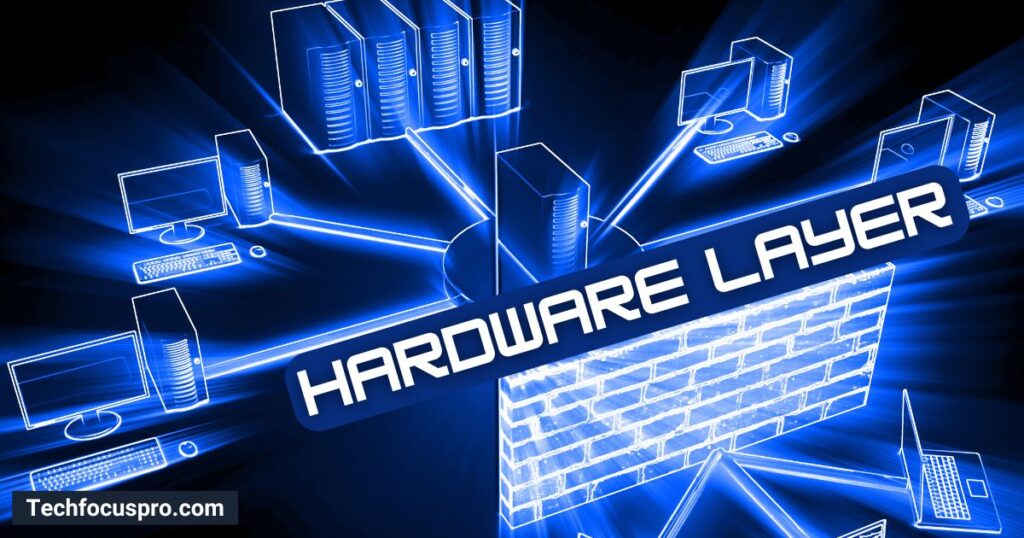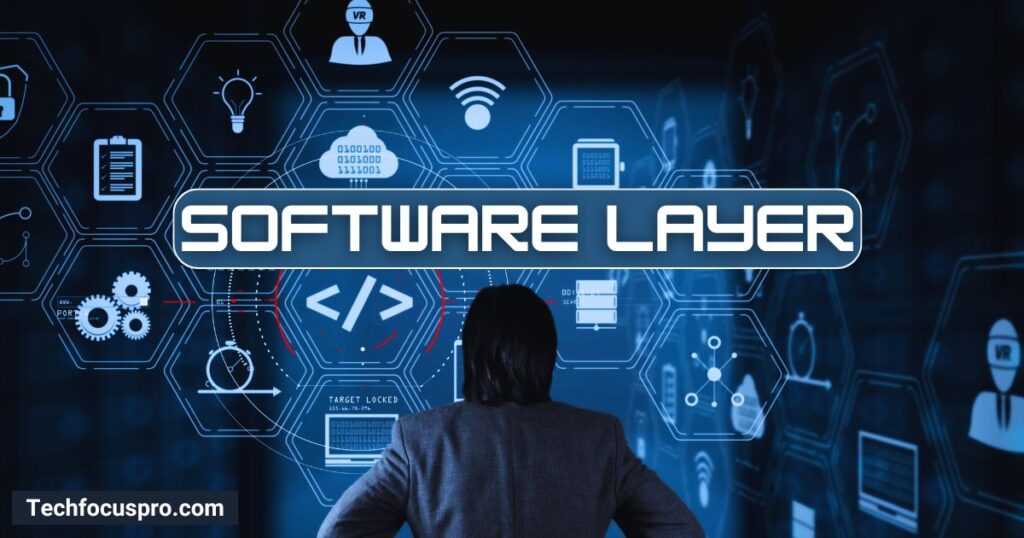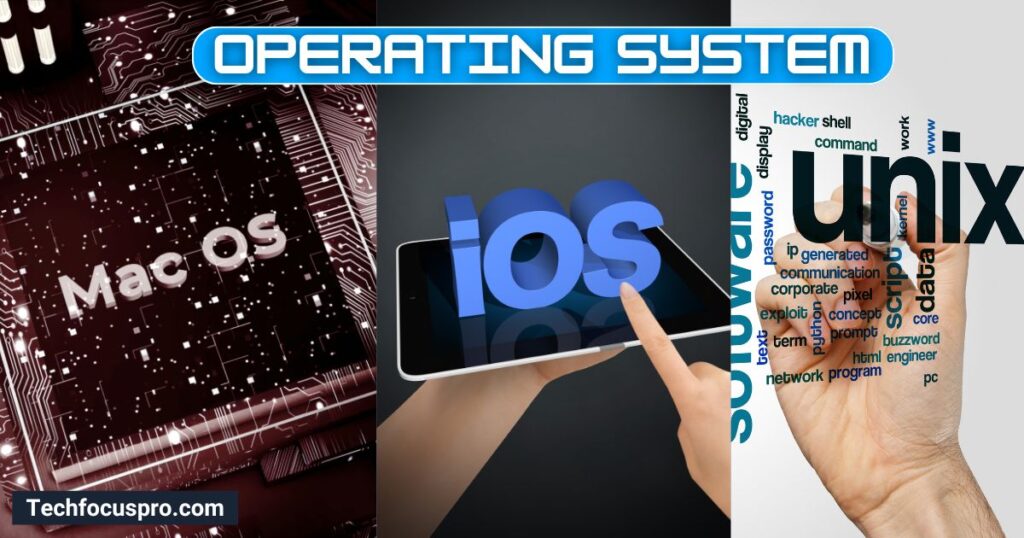What are the Four Main Layers of Computer Architecture?

It is essential to understand that computer architecture has four main layers.
The structure of a computer’s operation is made up of numerous layers, which go from the most fundamental hardware level to the high-level notion that users interact with.
To create a coherent system, each layer is constructed on top of the one underneath it and has a distinct purpose.
When done in this layered manner, it is easier to learn about, design, develop, troubleshoot, and comprehend how complex processes are carried out within a computer.
Hardware Layer

Definition and Role:
The hardware of a computer consists of all the visible and touchable physical parts. Think of it like the body of a computer. The Central Processing Unit sometimes called the CPU, powers the computer and does all calculations and decision-making.
A computer’s short—and long-term memory is made up of Random Access Memory (RAM) and Read-Only Memory (ROM). They hold instructions required for the computer to boot up and data that the CPU needs to access quickly.
The mouse for navigating, the keyboard for typing, and the display or screen that shows you what the computer is doing come next on the list of input/output devices.
These gadgets allow us to direct computers and observe their actions in real-time. All data, including operating systems, applications, and private files, is kept on storage devices like solid-state disks or SSDs.
Importance:
The hardware gives the computer the tools to carry out commands (like launching an application) and store data (like preserving a document). A computer could not function as a physical entity or perform computations without hardware.
Software Layer

The programs and instructions that enable computers to be valuable tools in our daily lives are found in the Software Layer. If you were to teach a buddy how to make a cake without providing them with the recipe, they might mix up the ingredients.
The software gives computers the precise instructions they need to perform jobs similarly. There are two primary categories for this layer:
- System Software: System software ensures that everything you cannot see directly functions, much like the backstage crew of a theatre. It consists of the operating system (OS), which functions as a kind of grand master controlling how hardware parts interact with one another. System software also includes device drivers, which serve as interpreters to facilitate correct communication between the hardware and the operating system.
- Application Software: Application software refers to the programs we use for various jobs, such as word processors for document typing, web browsers for online browsing, and entertainment games. They perform for the audience, which consists of us, the users, much like actors do on stage.
Consider software development to be the process of writing the cake recipe. It involves creating software with various tools and settings acting as cooking utensils and programming languages (Python or Java) as the ingredients.
Combining these components, developers build code that instructs the machine on how to carry out particular tasks. The result is anything from straightforward apps to intricate operating systems.
Operating System Layer

What It Is and Why It Matters:
Consider the Operating System (OS) as a multifunctional wizard that ensures the hardware components of your computer work together harmoniously.
It’s a unique kind of software that links the applications you use, such as web browsers and games, and the hardware you can touch, such as the keyboard, display, and hard drive. Using a computer without the operating system (OS) would be tough, like trying to converse in a language you don’t know.
What It Does:
- Runs the Show: In charge of the show: Under the hood, the OS takes care of everything fundamental, allowing your favourite programs to function without hiccups. It also ensures that files are saved in the correct locations and that your games have sufficient RAM.
- Organizes Files: It stores your files in an orderly fashion, similar to how a librarian arranges books on a shelf so you can find them when needed.
- Plays Traffic Cop: Like a traffic cop, the operating system controls which process on your computer has precedence, ensuring that each process has a turn and that no single program uses up all the resources.
Examples You Might Know:
- Windows, that’s the one you see in offices and classrooms all the time.
- macOS, which powers Apple’s Mac computers, is called macOS.
- Linux distributions are meant for computer enthusiasts who enjoy tweaking and controlling their systems more.
If your PC were a busy restaurant, the operating system would be the manager, ensuring everything goes according to plan, from receiving your order (input) to delivering your food (output).
Users Interface Layer

Role and Interaction:
The User Interface Layer is an essential component that enables direct computer-to-user communication between you, the user, and the computer.
This layer links you to the intricate world of computers, whether you interact with it by clicking icons on a graphical user interface (GUI) or entering instructions in a command line.
Telling a friend a secret would be difficult if you didn’t speak their language. User interfaces fill that need by converting your commands into a language the machine can comprehend and vice versa.
Importance of User-Centric Design:
It is impossible to exaggerate the significance of user-centric design. This method concentrates on creating user-friendly and intuitive interfaces. It’s crucial to consider technology from the viewpoint of the user, which is you, to make sure that it helps people successfully and efficiently rather than leaving them perplexed or frustrated.
It should be evident whether to push or pull, like when building a door. Similarly, an intuitive user interface allows users to complete activities without consulting a manual.
How easy and simple a user interface is to use greatly influences how productive and enjoyable using a computer may be.
Conclusion:
The foundation created by each computer architecture layer, built upon the layer underneath it, supports a computer system’s overall functionality and performance. Thanks to this hierarchical structure, developers and engineers can specialize in many areas of computer science and technology, which promotes innovation and growth in the sector.
FAQs
What are the four main layers of computer architecture?
The Hardware, Operating System, Software, and User Interface are the four primary layers of computer architecture. Every layer is essential to a computer’s seamless and effective operation.
Why is the Operating System Layer important?
Because it serves as a bridge between the end-user programs and the computer’s hardware, the operating system (OS) layer is crucial. It makes it simpler for users to interact with the device by prioritizing system operations, managing hardware resources, and organizing files without requiring them to comprehend intricate technical details.
How do the Software and User Interface Layers differ?
The application and system software in the software layer enable the computer to perform specific tasks, such as document editing and web browsing. The user interface layer, on the other hand, concentrates on how end users interact with these programs and the computer itself. It highlights the need for user-centric design for a seamless and straightforward user experience.
What role does the Hardware Layer play in computer architecture?
As the foundational layer of computer design, the hardware layer supplies the parts needed for the computer to operate. This includes the central processing unit (CPU), memory (RAM), storage devices (hard drives or SSDs), and input/output devices (keyboards, mice, and monitors). With the Hardware Layer, those above layers could operate.







I have perused some remarkable items on this site that are unquestionably valuable to bookmark for later use. I’m interested in how much effort you put into creating such a fantastic and instructive website.